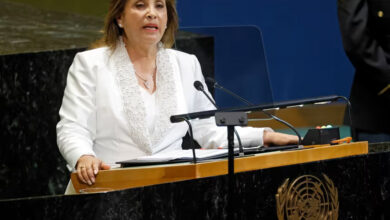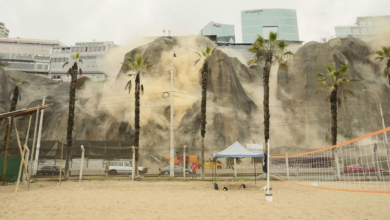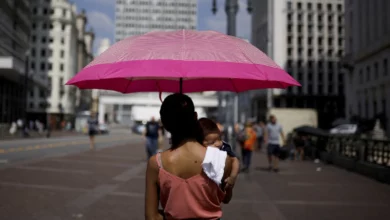
When Manuel Garcia opens his house door near Peru's capital, his neighbors rest in a macabre tableau of tombs and wall crypts amid flies buzzing around freshly-dug graves.
Garcia resides in one of the two impoverished neighborhoods that share space with the sprawling, century-old Santa Rosa cemetery in Callao, outside Lima.
Some 2,000 families live in modest homes that blend with the morbid landscape of the burial site, larger than four soccer pitches.
A tomb marked with the remains of Zenobio Zea, who died in 1979, is in the middle of the stairs leading to one of the slums.
Residents have no choice but to look at tombs on their walks to school, the bakery or the bus stop. Children play in a park next to the dead.
Garcia's window has a view to one the walls containing niched remains in the illegal necropolis. He has lived for two years just five meters (15 feet) away from the deceased.
"We aren't afraid, but we haven't gotten used to the strong smell or the flies that go into the kitchen," Garcia said.
The municipal authorities of Callao have shuttered the cemetery due to public health concerns.
But with a skeleton budget, the mayor is left with the conundrum of what to do with 20,000 tombs and how to lock it down to prevent more burials.
"It's a threat to public health and people run the risk of an epidemic," said Aldo Lama, director of a Callao health agency that has asked for the cemetery's closure for lack of health and safety standards since 1998.
Bad stench
The place smells of liquor and trash while dog feces litter some paths.
Leaving flowers or notes for many of the dead requires the agility of an acrobat: some of the niche walls stack 10 tomb spaces on top of each other.
Some believe shady things are done to the bodies.
"They traffic the dead, sell them to the university," said a woman who sells candy around the cemetery, looking suspiciously to her left and right.
"Don't ask my name. Nobody can talk here. Everybody is afraid of the bricklayers and the gravediggers."
The cemetery has grown so much that it can be hard finding a loved one's grave.
"They let the cemetery grow as they wish," said a woman who was searching for her father's tomb for a half hour to lay a flower on his birthday.
Cheap graves
The cemetery emerged in 1912 on a hill known as a La Regla. As Lima expanded, people began to occupy the empty lots around the cemetery, mixing with the crypts, which were also increasing.
For the poor, the Santa Rosa cemetery is the most affordable option. A tomb can cost between US$3,000 and $5,000 at a private grave site, and up to $1,000 at a municipal cemetery.
A company named Taboada charges up to $250 for a final resting place at the Santa Rosa cemetery, according to the authorities.
Doyle Costa, a Callao municipal official, said the company has no permit and has been accused of public health violations.
"But nobody knows who they are," Costa said.
Authorities have closed a chapel where a man with a Bible was charging people for funeral services.
But Santa Rosa is not the only illegal cemetery in the region. Of 50 cemeteries identified by the health ministry in Lima and Callao province, only 18 are legal.




